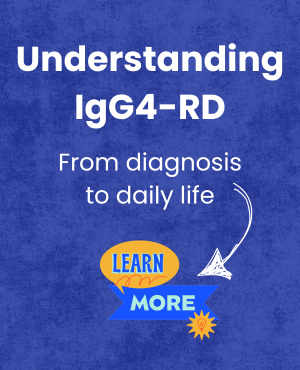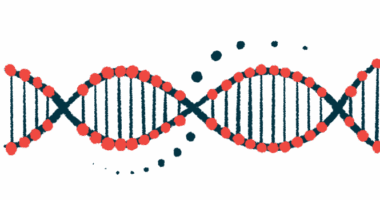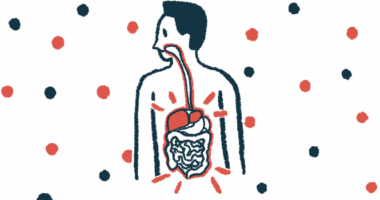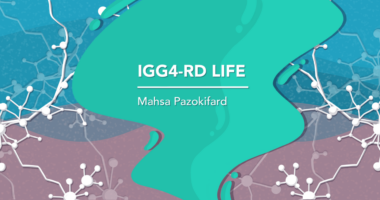Non-standard whole-body scan may detect, track IgG4-RD: Small study
DWIBS needs to be performed only once, potentially saving time, money

A type of imaging scan called DWIBS may offer a safe, noninvasive way to detect immunoglobulin G4-related disease (IgG4-RD) across the entire body with a single scan and track response to treatment more accurately, a small study suggests.
“DWIBS can readily detect IgG4-RD lesions throughout the body simultaneously and provide information about disease activity and therapeutic effects,” researchers wrote.
The study, “Diffusion-weighted Whole-body Imaging with Background Body Signal Suppression Enables Simultaneous Whole-body Assessments of IgG4-related Diseases,” was published in Internal Medicine.
Reaching an IgG4-RD diagnosis can be difficult
IgG4-RD occurs when immune cells, particularly those producing the antibody IgG4, flood tissues and cause inflammation, scarring (fibrosis), and tumor-like growths, which can enlarge organs and disrupt their function.
The disease can affect several organs and tissues, most commonly the pancreas, head and neck, and abdomen. Reaching an IgG4-RD diagnosis can be difficult because the disease can look similar to cancer or other inflammatory diseases.
“Distinguishing this condition from a malignant tumor or other fibroinflammatory disease is important,” the researchers wrote.
Imaging tests like CT and MRI scans of the head and abdominal regions can help detect organ involvement in IgG4-RD and reach a diagnosis. Diffusion-weighted whole-body imaging with background body signal suppression (DWIBS) is an imaging scan that can detect tumors and inflammation through the movement of water molecules in a microenvironment.
“DWIBS can obtain high-quality thin-slice images without breath-holding,” and allows “the distribution of lesions throughout the body to be displayed in three dimensions,” the researchers wrote. It “needs to be performed only once and is therefore potentially more time- and cost-effective than other modalities used for whole-body evaluations.”
Researchers in Japan explored whether DWIBS could help detect IgG4-RD
In this study, a team of researchers in Japan explored whether DWIBS could help detect and track IgG4-RD.
The study included 20 people (14 women, six men) who underwent DWIBS for the diagnosis of IgG4-RD between March 2023 and November 2024. The most commonly affected organ was the pancreas (60% of patients).
A total of 19 participants also underwent CT scans, the results of which were compared with those of DWIBS.
The DWIBS scans detected high signal intensity in the main IgG4-RD lesion of each participant. A total of 28 additional lesions were detected in 15 patients, affecting eight organs and the retroperitoneum, the area in the back of the abdomen where several tissues and organs are located.
Most of the lesions detected with DWIBS also appeared as masses or thickened tissues on CT. Kidney and retroperitoneum lesions in three patients were not detected by CT scans. Also, 10 high-intensity areas, most commonly in the tear-producing glands, “were solely diagnosed as IgG4-RD lesions on DWIBS,” the researchers wrote.
DWIBS can readily detect IgG4-RD lesions throughout the body simultaneously and may be performed repeatedly because it is noninvasive and time-efficient.
Conversely, DWIBS missed two areas of thickened bile ducts, the tubes that transport the digestive fluid bile, in two patients, “possibly owing to the small size of the lesions,” the team wrote.
Glucocorticoids, the first-line treatment of IgG4-RD, were started in the 11 people who were experiencing symptoms. Six of them underwent another DWIBS scan and blood tests to assess treatment efficacy.
All of these participants responded well to glucocorticoids, with their symptoms easing and high blood IgG4 levels, a common feature of IgG4-RD, significantly dropping by more than three times.
Follow-up DWIBS scans showed “some degree of improvement in all 16 high-intensity areas,” the researchers wrote, with some lesions disappearing completely and others becoming smaller or less bright.
The apparent diffusion coefficient (ADC) of affected organs and regions also increased significantly after treatment. The ADC reflects how water moves in tissues, with lower values indicating tumors or lesions.
“DWIBS can readily detect IgG4-RD lesions throughout the body simultaneously and may be performed repeatedly because it is noninvasive and time-efficient,” the researchers concluded, adding it also “has the potential to be a highly useful examination tool in the treatment of IgG4-RD.”








